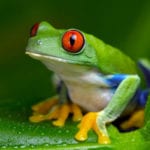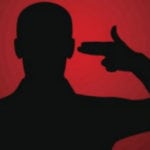 Music
Music  Music
Music  History
History 10 Less Than Jolly Events That Occurred on December 25
 Weird Stuff
Weird Stuff 10 Funny Ways That Researchers Overthink Christmas
 Politics
Politics 10 Political Scandals That Sent Crowds Into the Streets
 Weird Stuff
Weird Stuff Ten Bizarre Facts About The Doge Meme
 Our World
Our World 10 Ways Your Christmas Tree Is More Lit Than You Think
 Movies and TV
Movies and TV The 10 Coolest Stars to Set Sail on The Love Boat
 History
History 10 Things You Didn’t Know About the American National Anthem
 Technology
Technology Top 10 Everyday Tech Buzzwords That Hide a Darker Past
 Humans
Humans 10 Everyday Human Behaviors That Are Actually Survival Instincts
 Music
Music 10 Surprising Origin Stories of Your Favorite Holiday Songs
 History
History 10 Less Than Jolly Events That Occurred on December 25
 Weird Stuff
Weird Stuff 10 Funny Ways That Researchers Overthink Christmas
Who's Behind Listverse?

Jamie Frater
Head Editor
Jamie founded Listverse due to an insatiable desire to share fascinating, obscure, and bizarre facts. He has been a guest speaker on numerous national radio and television stations and is a five time published author.
More About Us Politics
Politics 10 Political Scandals That Sent Crowds Into the Streets
 Weird Stuff
Weird Stuff Ten Bizarre Facts About The Doge Meme
 Our World
Our World 10 Ways Your Christmas Tree Is More Lit Than You Think
 Movies and TV
Movies and TV The 10 Coolest Stars to Set Sail on The Love Boat
 History
History 10 Things You Didn’t Know About the American National Anthem
 Technology
Technology Top 10 Everyday Tech Buzzwords That Hide a Darker Past
 Humans
Humans 10 Everyday Human Behaviors That Are Actually Survival Instincts
10 Humans And Animals That Got Frozen But Survived
Freezing to death is the direct opposite of burning to death. Both are horrible ways to die, though freezing tends to be longer, condemning victims to a slow, shivering death. However, hypothermia is more survivable than immolation.
Over the years, a number people and animals have been frozen to the point where death would seem assured, only to be thawed and ultimately survive. Most were left without any permanent injuries, although some did have to undergo amputations. These are their stories.
10 Jean Hilliard

In December 1980, Jean Hilliard was driving down a road in Minnesota when her car went into a ditch. It was a very cold night with temperatures well below zero. She abandoned her vehicle to seek help at a nearby house. Unfortunately, there was nobody home. There was nobody in the next house, either.
She’d almost reached a third house, 3.2 kilometers (2 mi) from where she’d left her car, when she collapsed just 4.6 meters (15 ft) from the door. Homeowner Wally Nelson found Jean’s body the next morning. She was frozen and covered in ice. Wally thought she was dead. He said her face was “ghost-white,” and her body was “as stiff as a Popsicle.”
Wally soon realized Jean was alive when he heard her moan. He carried her to the back seat of his car and drove her to the hospital. He could not put her in the front seat because her body was stiff and frozen.
Dr. George Sather observed that even Jean’s eyeballs were frozen. And so were her feet inside her boots. He could not determine her temperature because it was too low for the thermometer. Dr. Sather also thought she was dead until he, too, heard her moan. He wrapped her body in an electric heating pad and connected her to oxygen. Jean made a full recovery.[1]
9 Justin Smith
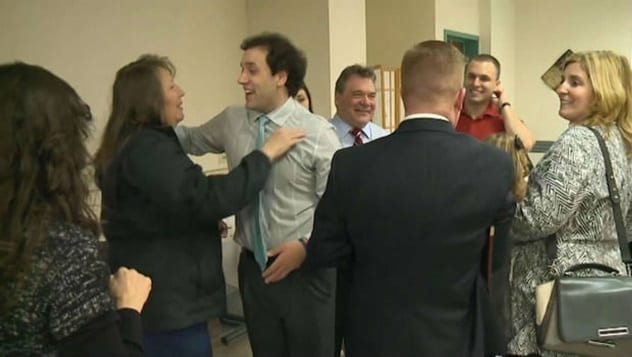
In early 2015, Don Smith found the frozen body of his 26-year-old son, Justin Smith (center above), by the roadside, some distance away from their Tresckow, Pennsylvania, home. Justin had been drinking with friends on the night of the accident. Ironically, they were drinking in memory of another friend who’d previously died in a car accident which John had survived.
Justin left the group at around 9:30 PM and was walking home when he passed out. He remained in the snow, and the temperature reached -20 degrees Celsius (–4 °F) overnight. His father, after having been alerted by one of Justin’s friends, found his son at around 7:30 AM the next morning.
The police and paramedics arrived to find Don with his frozen son. They thought Justin was dead. In fact, a coroner had arrived on the scene to investigate the cause of death. Don also called his wife to inform her that their son was dead.
However, medics administered CPR to Justin before airlifting him to a hospital, where blood was pumped out of his body, oxygenated, and pumped back in. Justin woke up after 15 days in a coma. He survived but suffered severe frostbite that required the amputation of some toes and both of his little fingers.[2]
8 Ewa Wisnerska

People don’t have to be on the ground to get frozen. In February 2007, 35-year-old paraglider Ewa Wisnerska became frozen in the air as she was paragliding over Manila, New South Wales, Australia.
Ewa was preparing for the World Paragliding Championships when a storm sucked her into the clouds. She was continuously hit by rainfall and orange-sized hailstones as the storm took her from roughly 760 meters (2,500 ft) to 9,750 meters (32,000 ft) in just 15 minutes.
Ewa passed out as temperatures plummeted to minus 50 degrees Celsius (–58 °F), and she could not get enough oxygen. She regained consciousness about one hour later but could not control her paraglider because her hands and gloves were frozen. She was flying at 6,900 meters (22,600 ft) at the time and was soon sucked into the clouds again.
The storm finally discharged her about 64 kilometers (40 mi) from her takeoff point. Ewa was covered in ice by the time she landed. She did not suffer permanent injuries except for serious frostbite around her ears. She spent one hour in a hospital before she was discharged.
Another paraglider, 42-year-old He Zhongpin, was not so lucky. He was sucked into the same storm but never survived. His body was recovered almost 80 kilometers (50 mi) from his takeoff point.[3]
7 Beck Weathers

On May 10, 1996, 49-year-old Beck Weathers froze and almost died during a failed attempt to climb Mount Everest. Beck had undergone a radial keratotomy surgery to correct his nearsightedness before traveling to the Himalayas. The surgery essentially entailed the creation of small incisions in his corneas.
This became a problem when the shape of his corneas changed as he climbed higher altitude, impairing his vision. Mountain guide Rob Hall discouraged Beck from climbing further and advised him to wait until he returned from the summit. However, Hall became stuck farther up while trying to help another climber and died the next day.
Weathers descended the mountain with other climbers until a severe snowstorm left them disoriented. Weathers lost his right glove, and his hand froze immediately. He soon suffered from both hypothermia and hypoxia. If that wasn’t enough, heavy winds later swept him into the snowstorm.
Some climbers found Weathers buried in snow the next morning. His arm was still frozen, and his face was covered in ice. He was in a hypothermic coma, which is usually the last stage a frozen person reaches before dying. No human had ever recovered from a hypothermic coma at the time.
Weathers’s climbing partners thought he was dead and abandoned him. However, a mountain guide and doctor frequently visited him for the next 24 hours, waiting for him to die. Instead, Weathers awoke from the coma and ultimately survived. Parts of his face, foot, and arms were later amputated. Eight other climbers died in the snowstorm.[4]
6 Erika Nordby
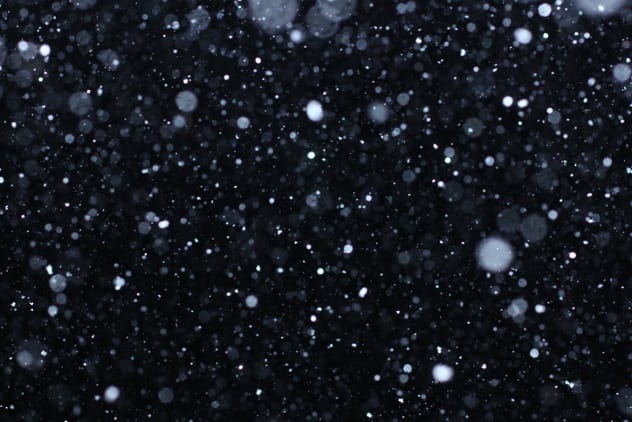
During the early morning hours of February 23, 2001, one-year-old Erika Nordby strolled into the icy cold outside her home in Edmonton, Alberta, Canada. She only wore a T-shirt and diaper, which were not enough to protect her from the temperature of minus 24 degrees Celsius (–11 °F). She soon froze in the snow.
Her mother, Leyla, woke after 3:00 AM, surprised that Erika had not been crying for food. Leyla searched for Erika and soon found her curled in the snow outside. Leyla carefully wrapped Erika with blankets, afraid that she would break her daughter’s frozen limbs if she handled Erika too hard.
Paramedics and police soon arrived and took Erika to the hospital. Doctors were about to connect Erika to a heart and lung machine that would have extracted and warmed her blood before returning it back into her body when her heart started to beat again. Erika awoke 24 hours later.
Unfortunately, things did not go smoothly for Leyla. While Erika became the “Miracle baby,” Leyla became “the mother who left her baby in the snow.” Leyla got so much negative press that she left the area and moved to a new home.
Erika herself would be bullied at school years later. Students often mocked her about her drunk and poor mother. They also mocked her with a song that Canadian musician Stompin’ Tom Connors sang about the incident.[5]
5 Dosha The Dog
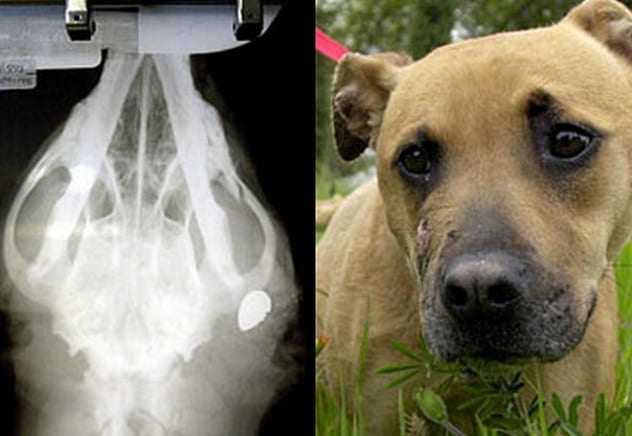
On April 15, 2013, Dosha, a ten-month-old dog, was hit by a car after escaping from the home of her owner in Clearlake, California. She survived the accident but was badly injured. A police officer later shot her in the head to put her out of her misery when no one could tell him who owned her.
The supposedly dead Dosha was taken to an animal shelter, where she was put in body bag and stored in a freezer in preparation for disposal. Two hours later, the director of the shelter was surprised to find the almost frozen dog standing up inside the bag when he opened the freezer. Dosha was ultimately reunited with her owner and went on to make a nearly full recovery, other than some problems with her right ear due to having been shot in the head.[6]
4 Mitsutaka Uchikoshi

On October 7, 2006, 35-year-old Mitsutaka Uchikoshi fell into a stream during a failed attempt to climb Mt. Rokko in Japan. He broke his pelvis but remained conscious before passing out the next day. He was rescued when another climber found his body 24 days after the accident. He had remained unconscious the rest of the time he was lost.
While it appeared that Uchikoshi was not frozen, his temperature had fallen to 22 degrees Celsius (72 °F). He had maintained a low body temperature for an extended period of time. He also suffered from blood loss and multiple organ failure.
Doctors were fascinated with the incident and touted it as the first recorded instance of a human hibernating. They observed that Uchikoshi’s body shut down and slowly went into hibernation while temperatures on the mountain fell as low as 10 degrees Celsius (50 °F). He made a full recovery.[7]
3 Fluffy The Cat

On January 31, 2019, Fluffy, a cat, almost froze to death after leaving the home of her owner in Kalispell, Montana. Her owner found the feline frozen and covered in thick ice. Fluffy was taken to a veterinary clinic. Her temperature could not be taken because it was too low for the vets’ thermometers, which could not read below 32 degrees Celsius (90 °F).
However, vets observed that Fluffy was not frozen stiff. They warmed her with heating pads and hot towels, and she went on to make a full recovery. The vets later discovered that Fluffy ended up frozen because she had an injury that prevented her from returning home.[8]
2 Anna Bagenholm
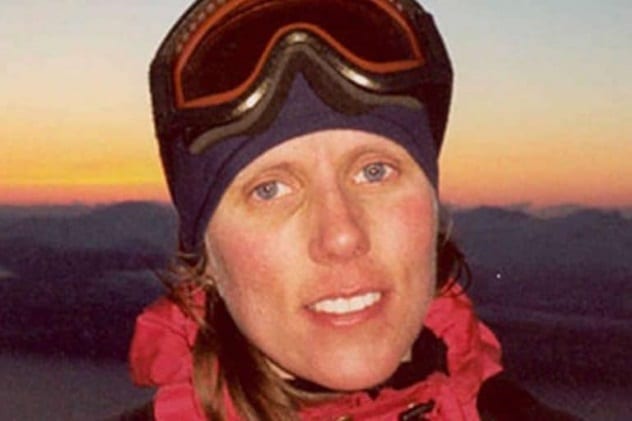
In May 1999, Anna Bagenholm, a 29-year-old radiologist, was skiing with two other colleagues in the Kjolen Mountains in Norway when she fell into a frozen stream. Her head was underwater while her legs were above. Her colleagues tried pulling her out her, but the water was frozen. She was also stuck between some rocks.
Bagenholm found a pocket of air under the ice. However, she was slowly sinking into the water. She struggled to free herself for 40 minutes until she stopped moving. She remained underwater for another 40 minutes until help arrived, at which point only her feet were above the ice.
Bagenholm was frozen at the time she was rescued. She was not breathing, and her heart was not beating. Her temperature was at an insanely low 13.7 degrees Celsius (56.7 °F). No human had survived such an extremely low body temperature at the time.
Doctors hooked Bagenholm to a heart and lung machine. Her blood was pumped out of her body and warmed before it was pumped back in again. This continued until her heart started to beat the next day. She came out of a coma 12 days after the accident. She suffered nerve damage that left her bedridden for one year but eventually made a nearly full recovery.[9]
1 Stella Berndtsson

Anna Bagenholm held the record for the lowest temperature ever recorded in a human until seven-year-old Stella Berndtsson froze in the ocean on Sweden’s western coast on December 25, 2010. Anna’s temperature was just 13 degrees Celsius (55.4°F) when she was found.
On December 25, 2010, Anna left her home in Lyr, Sweden, to find an imaginary treasure she had drawn on a map. The temperature outside was minus 12 degrees Celsius (10 °F). Her parents only realized she was missing when they did not see her for a while.
Neighbors formed a search party. Her father, Peter, found her footprints at the back of their home and tracked them to a cliff where it was obvious that she had fallen. However, her tracks continued, indicating she got up and continued to walk toward the shore.
A fisherman, three helicopters, and the coast guard later joined the search for the missing girl. One helicopter spotted her in the water and airlifted her to the hospital. Anna’s heart had stopped beating, and doctors thought she was dead. They even informed her parents that there was little hope she would survive.
Doctors slowly warmed her body. Hours later, her heart started to beat, and 12 hours later, she opened her eyes but quickly shut them. Anna started talking two weeks after her rescue and went on to make a full recovery. She barely remembered the accident or her time at the hospital three years later.[10]
Read more unbelievable stories of survival on 10 People Who Survived Your Worst Nightmares and 10 More People Who Survived Your Worst Nightmares.

